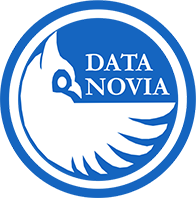Introduction
JSON (JavaScript Object Notation) is a widely-used data format for transmitting data in web applications. In Python, working with JSON is straightforward thanks to the built-in json module. This tutorial will show you how to parse JSON data, serialize Python objects into JSON, and integrate with APIs that exchange data in JSON format. These techniques are essential for building modern, data-driven applications.
Parsing JSON Data
Parsing JSON data means converting a JSON-formatted string or file into a Python object (e.g., a dictionary or list).
Example: Parsing JSON from a File
#|label: parse-json-from-file
import json
# Open and read the JSON file
with open("data.json", "r", encoding="utf-8") as file:
data = json.load(file)
print("Parsed JSON Data:", data)Example: Parsing JSON from a String
#|label: parse-json-from-string
import json
json_string = '{"name": "Alice", "age": 30, "city": "New York"}'
data = json.loads(json_string)
print("Parsed JSON from String:", data)Serializing Python Objects to JSON
Serialization is the process of converting Python objects into a JSON-formatted string, which can then be saved to a file or transmitted over a network.
Example: Serializing and Writing JSON to a File
#|label: serialize-json-to-file
import json
# Create a Python object (dictionary)
data = {"name": "Alice", "age": 30, "city": "New York"}
# Write the Python object to a JSON file with indentation for readability
with open("output.json", "w", encoding="utf-8") as file:
json.dump(data, file, indent=4)Example: Serializing to a JSON String
#|label: serialize-json-to-string
import json
data = {"name": "Alice", "age": 30, "city": "New York"}
json_string = json.dumps(data, indent=4)
print("Serialized JSON String:\n", json_string)Integrating with APIs
APIs often use JSON to exchange data. Python’s requests library can be used to fetch and send JSON data easily.
Example: Fetching JSON Data from an API
#|label: api-fetch-json
import requests
import json
url = "https://api.example.com/data"
response = requests.get(url)
# Parse the JSON response into a Python dictionary
data = response.json()
print("API JSON Data:", data)Example: Sending JSON Data to an API
#|label: api-send-json
import requests
import json
url = "https://api.example.com/submit"
payload = {"name": "Alice", "age": 30, "city": "New York"}
headers = {"Content-Type": "application/json"}
response = requests.post(url, data=json.dumps(payload), headers=headers)
print("Response Status Code:", response.status_code)Conclusion
Working with JSON in Python is a fundamental skill for any developer, particularly when integrating with web APIs or handling data exchange between applications. By mastering both parsing and serialization, you can effortlessly convert data between JSON and Python objects, allowing you to build more dynamic and interactive applications. Experiment with these examples, and apply these techniques to your own projects to streamline your data handling processes.
Further Reading
- Handling File I/O in Python: Read, Write, and Process Files
- Introduction to Regular Expressions in Python
- Understanding Python List Comprehensions
Happy coding, and enjoy working with JSON in Python!
Explore More Articles
Here are more articles from the same category to help you dive deeper into the topic.
Reuse
Citation
@online{kassambara2024,
author = {Kassambara, Alboukadel},
title = {Working with {JSON} in {Python:} {Parsing} and
{Serialization}},
date = {2024-02-09},
url = {https://www.datanovia.com/learn/programming/python/additional-tutorials/json-handling.html},
langid = {en}
}
